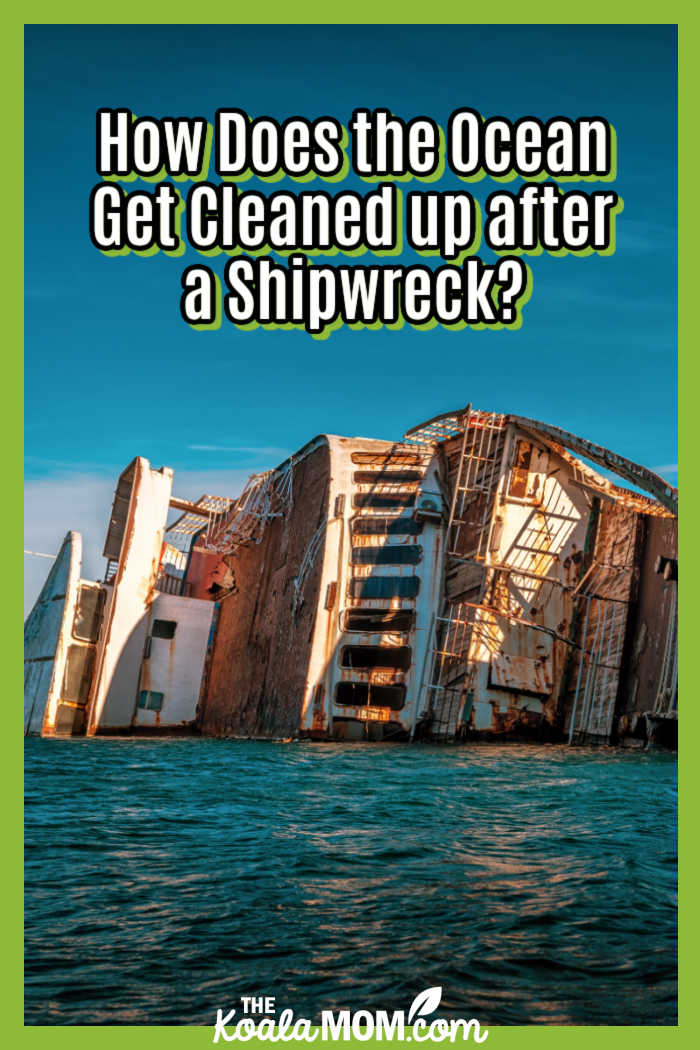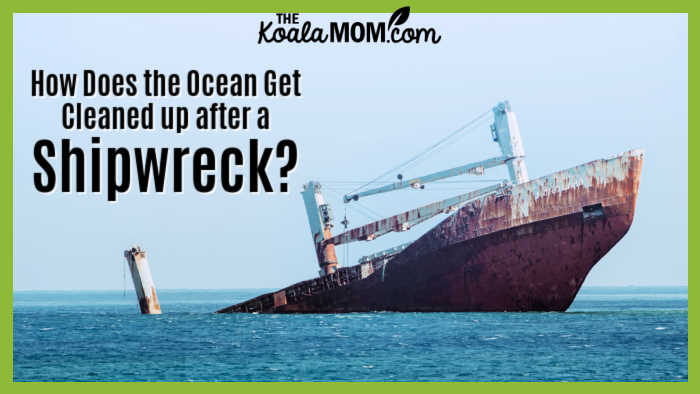Living on the west coast, we thoroughly enjoy swimming at local beaches and hiking along various coastal trails. While we enjoy these natural areas, we are often shocked by the garbage and debris we see along the way. Whether dropped by people like us or washed up from the oceans, these debris have caused numerous conversations with my children about our oceans and humans’ effects upon them.
Shipwrecks have long captured the imagination of people, evoking thoughts of mystery and adventure. However, beyond the romanticized tales lies a harsh reality: shipwrecks can have devastating consequences for the marine ecosystem. When a ship goes down, it can release hazardous substances into the ocean, posing a threat to marine life and habitats. Many of these substances can wash up on beaches and coasts far from where the shipwreck occurred, as my kids and I have seen.
In this blog post, we will explore the process of how the ocean gets cleaned up after a shipwreck, highlighting the efforts taken to mitigate environmental damage and restore the affected areas.

Initial Response to a Shipwreck
When a shipwreck occurs, immediate action is necessary to prevent further damage. Authorities and rescue teams swiftly mobilize to address the situation. One of the primary concerns is containing any oil spills that may have occurred. Oil spills can have severe consequences, suffocating marine life and damaging delicate ecosystems.
To contain oil spills, specialized equipment such as containment booms is deployed. These floating barriers help confine the oil slick, preventing it from spreading further. Skimmers are also used to remove the oil from the water’s surface physically. Additionally, chemical dispersants and biological agents may be employed to break down the oil and facilitate its degradation.
Assessing the Damage
Assessing the damage caused by a shipwreck is a critical step in understanding the extent of the contamination and debris that needs to be addressed. This process involves conducting underwater surveys and assessments using diving teams and remotely operated vehicles (ROVs). These experts carefully inspect the wreckage and surrounding areas, documenting the severity of the situation.
By identifying areas of high pollution concentration and vulnerable marine habitats, they can develop an effective cleanup plan and determine the potential long-term impacts on the ecosystem. Assessing the damage provides crucial information for guiding cleanup efforts and ensuring that resources are allocated appropriately to restore the affected areas.
Removing Pollutants and Debris
Removing pollutants and debris is a crucial step in the process of cleaning up after a shipwreck. Depending on the nature of the pollution and the size of the wreckage, different techniques are employed to effectively remove these contaminants from the marine environment. The biggest concern, as already noted, is oil spills.
In cases of oil spills where mechanical recovery methods are not feasible or effective, controlled burning may be utilized. This involves intentionally igniting the oil slick, which burns off the oil and reduces its impact on the environment. However, controlled burning is a carefully managed technique that requires expertise to prevent further harm.
Vacuuming techniques can also be employed to remove both oil and debris from the water. Powerful suction devices are used to draw up the pollutants, effectively cleaning the affected areas. These vacuuming methods are especially useful for removing smaller particles and sediments that may be suspended in the water column.
Aside from removing pollutants, it is also crucial to salvage the wreckage and any hazardous materials it may contain. Trained divers and specialized equipment are used to safely extract the wreckage, preventing further damage to the marine ecosystem and reducing the risk of additional pollution. However, ocean currents still spread many of the debris throughout the ocean and onto far shores.
When I hiked the West Coast Trail in 2019, I was surprised by many of the different things that had washed up on shore. Sea glass was common along the beaches and was the only thing we were allowed to remove from the national park. Other debris spotted included tires, boat floats, nets, huge plastic barrels, and more. Whether these were from shipwrecks or simply fell off a ship in bad weather or due to carelessness, they had an effect upon our environment.
Restoring the Affected Areas
After the pollutants and debris have been removed, efforts shift towards restoring the affected areas. This involves monitoring water quality and the recovery process of marine life. Scientists conduct regular assessments to track the progress of the ecosystem’s healing and identify any lingering impacts.
To aid in the restoration process, remediation strategies are implemented. Seeding of marine plants and animals may be carried out to reintroduce key species that were affected by the shipwreck. Artificial reefs are also constructed, providing a new habitat for marine organisms and promoting biodiversity.
Collaboration and Long-term Efforts
Cleaning up after a shipwreck requires collaboration between various stakeholders. Government agencies, environmental organizations, and local communities work together to ensure effective management and restoration of the affected areas. Research and innovation play a crucial role in developing new technologies and techniques to enhance ocean cleanup efforts.
Furthermore, long-term monitoring and maintenance are vital to ensure the sustained recovery of the ecosystem. Regular assessments and continued research help guide future management strategies, ensuring that similar incidents can be mitigated more effectively in the future.
If your child is interested in learning more about shipwrecks and cleaning up, there are some great picture books available, including:
- Ducks Overboard! a true story of plastic in our oceans (a picture book about a shipping container that fell off a cargo ship and spilled rubber ducks into the ocean, and where those ducks ended up)
- I’m Trying to Love Garbage (this books helps create a better awareness of garbage and where it ends up)
- Alba and the Ocean Cleanup (a cute picture book about a fish who collects various treasures, but notices her treasure collection begins to change).
Your kids may also be interested in checking out local news stories about ocean cleanups on beaches near you. Sometimes, these cleanups are open to local volunteers. Your whole family could spend a day helping to pick up the garbage on the beaches and discussing how we can protect the environment, not only from accidents such as shipwrecks but also by reducing the garbage we produce and preventing littering.

Shipwrecks may hold a certain fascination, but their impact on the ocean is far-reaching. The process of cleaning up after a shipwreck involves a coordinated response, careful assessment of the damage, and targeted efforts to remove pollutants and restore affected areas. It is a collective responsibility to protect our oceans and ensure their continued health and vitality.
By understanding the intricacies of ocean cleanup, we can work towards preserving these fragile ecosystems for generations to come.

No Responses Yet